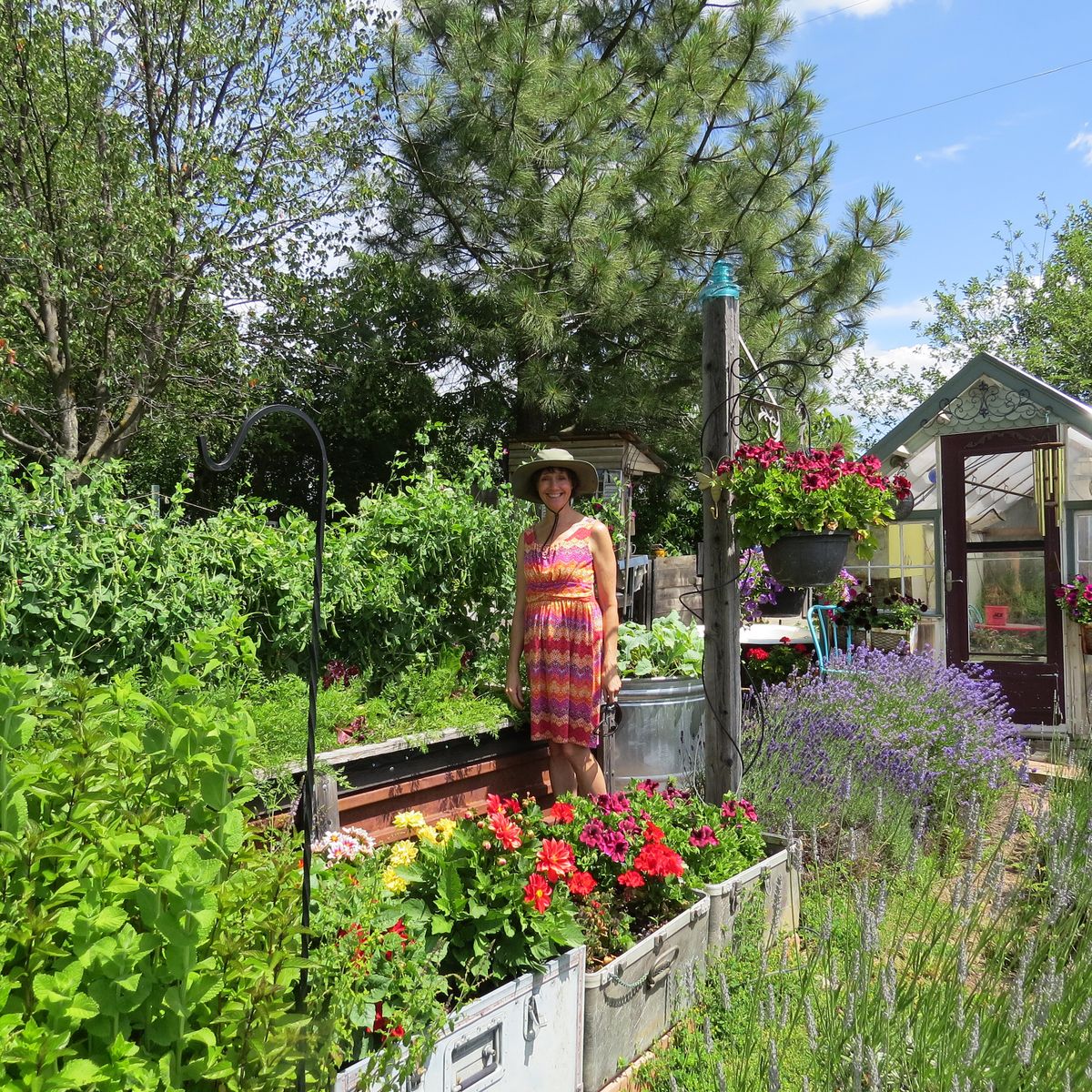In the Garden: Gardener finds creative ways to deal with willow’s unintended consequences

Marie Cole is a can-do gardener. Give her a challenge, and she will come up with creative ways to solve it.
She and her husband, Steve, are owners of Cole’s Orchard on Green Bluff. When she’s not working as director of the physical therapist assistant program at Spokane Falls Community College, Marie enjoys nurturing vegetables, herbs and flowers in her eclectic garden.
In recent years, she has been waging a battle with willow tree roots that have been infiltrating her planting beds. As many folks know, willows are water hogs and always seek out moisture.
Marie first planted the willow tree in 2004 and enjoyed a few years of carefree gardening before the tree roots found her beds.
“The first thing I did was make a raised bed using old metal roofing from a friend’s barn,” she said. “I lined it with five layers of gray weed-block fabric, which worked pretty well, but soon the roots sneaked up between where I had stapled it to the bed.”
She dug up the entire bed and removed a network of web-like roots from the soil. Despite switching to multiple layers of commercial weed block, the roots were back within a year.
Feeling really frustrated by this time, Marie decided to try some unusual solutions. She purchased a vinyl sign on Craigslist, folded it in half and re-lined the metal bed by taking the liner up and over the sides and screwing it down.
“Before I put in the liner, I angled the soil under it to create a slightly downward slope toward the front of the bed for drainage purposes,” she explained. “Then I drilled four holes into the front and installed PVC drain tubes. On the inside of the bed, I put broken pieces of pottery over the holes, then pea gravel over that, and replaced the soil.”
Her other solution was to use unconventional containers, placed on blocks, so those willow roots couldn’t get into them.
“I found a concrete laundry basin on Craigslist, which just about broke Steve’s and my backs when we moved it,” she recalled. “I turned two old stock tanks, an aluminum trunk and a second wash basin into beds. I use old wheelbarrows as planters, too, and built another bed that has an old truck bed liner in it to keep the roots out. I even made beds from old washer and dryer drums.”
Marie mostly grows flowers in the smaller, unconventional containers and vegetables in the raised beds and stock tanks. Everything is watered with a drip-irrigation system.
“I’m really enjoying the higher containers because I don’t have to bend over, and I really do not have much of a weed problem.”
It’s very likely that her childhood experiences gave her the ability to come up with ingenious solutions to problems.
“I grew up on a 500-acre cattle ranch. My folks were farmers and so were my grandparents, great-grandparents and their parents,” she said. “We had an orchard and huge garden, so we hardly ever had to buy groceries. We raised all our vegetables, had two root cellars full of spuds and vegetables, jams, canned fruit and veggies and freezers full of beef from our cattle. We had milk cows, so we made our own butter.”
Thinking back to the problematic willow tree, Marie had this to say:
“You might ask yourself why we don’t cut it down. I have thought about it many times, but since Steve likes the shade, I guess I’m starting to figure out how to live with it.”
Contact Susan Mulvihill at susan@susansinthegarden.com. Watch this week’s “Everyone Can Grow a Garden” video at youtube.com/susansinthegarden.